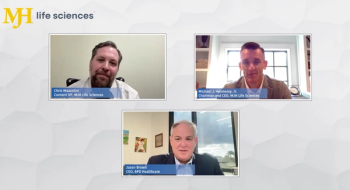
The Clinical Divide: Reducing Rising Drug Costs
Is there anything that physicians and healthcare executives can do to reverse the trend of rising drug costs?
As we know, drug therapy and new pharmaceutical treatments are essential for the treatment of chronic disease. Pharma has developed new drugs now that have the potential to cure, even eliminate once incurable diseases.
These drugs do come with a high cost of development, and I believe that pharma certainly is entitled to recoup their R and D costs. However, we must make sure that these costs are reasonable and that patients are not left out of treatments due to an inability to afford these potentially life-saving medications.
In report after report, we hear about rising drug costs and their negative effects on our healthcare system. There are new drugs for Hepatitis C, new drugs for treating cholesterol, certainly new drugs for treating cancer — these are highly effective and have proven in clinical trials to be life-saving, but often so expensive that many patients have no opportunity to reap the benefits of these treatments. So, let’s ask, is there anything physicians and health system executives can do to reverse this trend? How can we work together to curb drug prices and improve access to therapies for every single American, without leaving anyone out?
Welcome to the Clinical Divide. I’m Dr. Kevin Campbell. I’m a Duke-trained cardiologist and I’m CEO of the health data startup PaceMate. Every week, this Healthcare Analytics News™ video series examines healthcare tech and medicine’s top news. My job is to bring the views that help physicians and healthcare executives work together in an effort to bridge the clinical divide.
Let’s start with rising drug cost today. This month, we’ve seen stories about the effects of rising name-brand drug prices on the U.S.’s overall healthcare spend, which is already far too excessive. We’ve seen experts predict even higher prices going forward. We’ve seen a report that found that generic drug access has done very little to combat this problem. Many manufacturers work through lobbyists and others to manipulate patents, some have sued competitors in order to stop the production of generic bio-equivalent medications.
These practices, when you add them all up, and we find that we are staring down a problem that will continue to hamper physicians in our quest to improve patient outcomes. Let’s think about it. In the U.S. we spend more of our GDP on healthcare than any other developed country—yet our outcomes are really simply average. There’s those that spend less and do better. The cost of drugs is a crisis that ultimately harms patients. That’s the bottom line.
For its part, the federal government has recently launched efforts to try to curb rising drug prices—you know, this is a step in the right direction, but I am not sure that it is enough. The pharmaceutical lobby in Washington, D.C. is powerful, and these dollars find their way into our lawmakers pockets every single day.
The Centers for Medicare & Medicaid Services, CMS, has created drug dashboards and manufacturer drug price disclosure requirements. But we need even more transparency. The general public has had enough. Patients are beginning to use their collective voice to bash rising drug prices. Does anyone remember the outcry against fallen pharmaceutical executive, Martin Shkreli? What about Mylan Epipens and Heather Bresch? These executives are getting rich on the backs of everyday Americans. How can we as physicians and healthcare executives stand by and watch this without taking some sort of action to advocate for our patient?
Here’s the thing: While we are finally working to tackle these issues, we have not made nearly enough progress— at least not yet. Maybe these government efforts will pay off, but, as we know, government efforts take time, and there’s really no guarantee of success, particularly with the climate in D.C. right now.
So, once again, we must turn to ourselves. What can we as healthcare executives and physicians do? We must advocate for our patients. Those of us who are providers and C-suite executives who are in the trenches must join forces to ensure that patients have better access to both generic and name brand medications. We need to come together and pressure the people who are setting the drug prices to change them to fair and reasonable prices. We must prosecute those who take advantage of patients in need, and we must eliminate middle men, that I’ve discussed before, such as Pharmacy Benefit Managers, or PBM’s — these guys simply drive up drug costs. We have to brainstorm new and collaborative ways that we can make sure that no patient goes without the drugs they need to live healthy and productive lives.
Thank you for joining me today on this episode of The Clinical Divide. I hope found it as enjoyable as I have. Until next week, I’m Dr. Kevin Campbell for Healthcare Analytics News™.
Navigate the digital transformation with confidence.
Binge Some Clinical Divide




